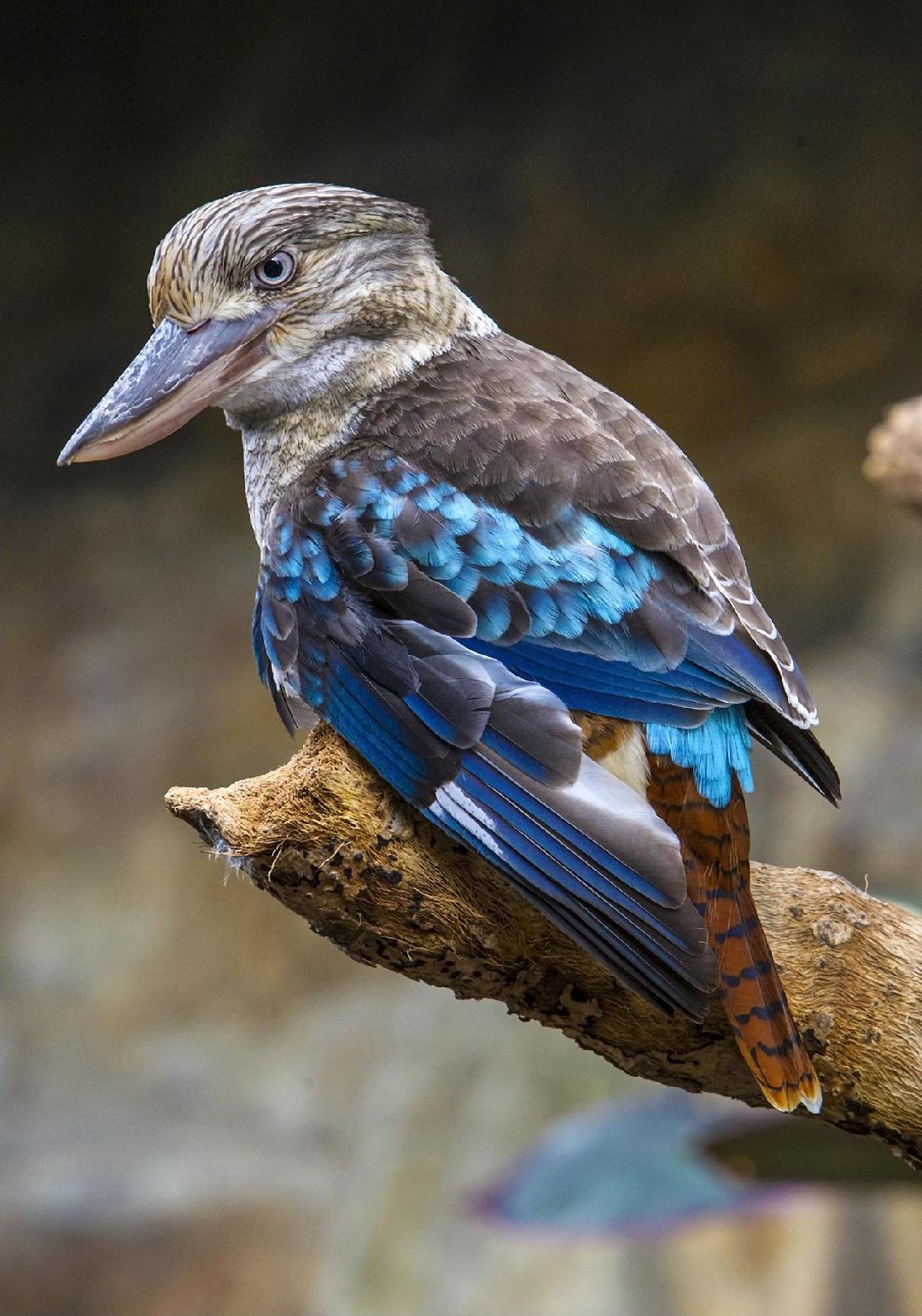Blue-winged Kookaburra
A species of Kookaburras Scientific name : Dacelo leachii Genus : Kookaburras
Blue-winged Kookaburra, A species of Kookaburras
Botanical name: Dacelo leachii
Genus: Kookaburras
Content
Description People often ask General Info
 Photo By Sheba_Also 43,000 photos , used under CC-BY-SA-2.0 /Cropped and compressed from original
Photo By Sheba_Also 43,000 photos , used under CC-BY-SA-2.0 /Cropped and compressed from original Description
The adult blue-winged kookaburra measures around 38 to 42 cm (15 to 17 in) in length and weighs 260 to 330 g. Compared to the related laughing kookaburra, it is smaller, lacks a dark mask, has more blue in the wing, and striking white eye. It has a heavier bill than its larger relative. The head and underparts are cream-coloured with brownish streaks. It is sexually dimorphic, with a blue tail in the male, and a rufous tail with blackish bars in the female. Immature birds have more prominent brown bars and marks in their plumage, giving a 'dirty' appearance, and their eyes are predominantly brown for the first two years of life. The call has been described as a maniacal cackling or barking. 
Size
41 cm
Life Expectancy
20 years
Nest Placement
Cavity
Feeding Habits
Blue-winged Kookaburra consumes a diverse diet, mainly invertebrates such as grasshoppers, beetles, spiders, and more, in addition to small vertebrates including fish, frogs, and birds. Utilizing a 'sit-and-wait' tactic, blue-winged Kookaburra exhibits unique hunting by snatching prey from the ground or water.
Habitat
Blue-winged Kookaburra thrives in diverse terrains, primarily occupying savanna woodlands, eucalypt woodlands, and forests near watercourses. They favor regions with tall trees and can be found in mangroves, monsoon forests, as well as urban parks and gardens. While avoiding dense undergrowth, blue-winged Kookaburra adapts to human-altered landscapes, including agricultural areas. These birds inhabit low to mid elevations, generally settling in less aquatic environments than their relatives.
Dite type
Carnivorous
People often ask
General Info
Feeding Habits
Bird food type
Distribution Area
The blue-winged kookaburra has a distribution from southern New Guinea and the moister parts of northern Australia, to the vicinity of Brisbane in southern Queensland across the Top End, and as far down the Western Australian coast as the Shark Bay area. However, it does not occur between Broome and Port Hedland in northwestern Australia. Widespread and common throughout its large range, the blue-winged kookaburra is evaluated as Least Concern on the IUCN Red List of Threatened Species. Found in family groups of up to 12 individuals, it lives in open savannah woodland and Melaleuca swamps, as well as farmlands such as sugar cane plantations. 
Species Status
Not globally threatened.